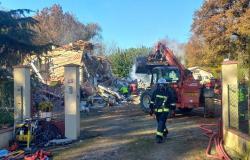
((Automated translation by Reuters, please see disclaimer https://bit.ly/rtrsauto))
*
Fulcrum LNG lacks experience and financial support, experts say
*
Guyanese authorities say gas project selection is now provisional
*
Exxon declares that it will decide alone on the exploitation of gas resources
(Summit revamp must clarify implications for Guyana; criticism of selection is domestic and international) by Curtis Williams and Kemol King
Guyana's dreams of developing its vast natural gas resources are stuck on the drawing board five months after it chose a little-known US start-up, Fulcrum LNG, to develop an export project that could cost up to 'to 30 billion dollars.
Guyana is enjoying one of the fastest growing economies in the world, thanks to rapidly increasing oil production in lucrative offshore fields operated by Exxon Mobil XOM.N . But the South American country lacks the infrastructure to use the gas produced by these fields, which is reinjected to maintain pressure.
In June, the government selected Fulcrum LNG from 16 other applicants – including major players in the liquefied natural gas (LNG) sector and pipeline companies – to develop its gas resources and create a new revenue stream outside of oil, which is entirely exported.
The country's leaders have said they want to expand their partnerships beyond the Exxon-led consortium, which produces all the oil in this new energy hot spot.
Fulcrum LNG was founded a year ago by Jesus Bronchalo, a former Exxon executive.
It is an unusual choice to carry out LNG and infrastructure projects that will require considerable expertise and financial muscle, industry experts and advisers to Guyana said.
Fulcrum LNG “does not have the required experience and has not demonstrated the ability to raise the kind of multibillion-dollar financing needed,” said Elson Low, an economist and adviser to the opposition People's National Congress party. National People's Congress).
Bronchalo did not respond to Reuters requests for comment. He is the general manager, secretary, treasurer, director and president of Fulcrum. The only other person associated with the company, the technical director, also did not respond to requests for information.
Government officials began calling Fulcrum's selection for the contract tentative.
“No project has been awarded to anyone. We are in an exploratory phase,” Guyana Vice President Bharrat Jagdeo told Reuters last month.
This is a change in the language used by the finance ministry when it cited the contract award among its economic achievements of the year. The Guyanese president, who announced the contract award, said an agreement, whether including Exxon or not, was expected next year.
When Fulcrum was selected, Bronchalo said on LinkedIn that he was delighted and honored to have been chosen “to design, finance, build and operate the required gas infrastructure.”
The company plans to partner with U.S. oilfield services company Baker Hughes BKR.O and construction firm McDermott MCDIF.PK . Fulcrum's proposal would include financing from the U.S. Export-Import Bank and participation from private equity firms and an environmental partner, the government said.
Fulcrum has not yet made public details regarding these investors.
The US Export-Import Bank and McDermott did not respond to requests for comment, and Baker Hughes referred questions to Fulcrum.
According to Ira Joseph, an LNG market expert and senior fellow at the Center on Global Energy Policy at Columbia University, it would be “very difficult” for a start-up to raise the funds needed for a multi-billion infrastructure project. dollars.
The project was designed to help the country increase its energy revenues. Last year, Guyana earned $1.6 billion in oil royalties, compared to $6.33 billion in profits for the Exxon-led consortium.
FULCRUM
Guyana chose Nevada-registered Fulcrum, which presented “the most comprehensive and technically sound proposal” among bidders, including China's third-largest oil company CNOOC 600938.SS, US gas pipeline giant Energy Transfer ET.N and the fourth largest US LNG exporter Venture Global LNG.
Fulcrum's website does not mention any previous projects, but claims “extensive experience in creating new opportunities to access and capture global LNG markets.”
Guyanese authorities now say they chose Fulcrum without first determining whether the company could raise the funds needed to exploit the enormous gas reserves.
The technical committee that selected Fulcrum was confident it could raise funds for the projects, Jagdeo told Reuters. “He said he had the ability to raise funds
Natural Resources Minister Vickram Bharrat said the expertise of Bronchalo, who worked for Exxon in Guyana and Asia for two decades and was involved in contract transactions, swung the selection in his favor.
“We expect Fulcrum to have the necessary capabilities and experience,” he said in an interview in October.
COLLABORATION OR CONFLICT
Exxon's consortium with Hess HES.N and CNOOC has discovered more than 11 billion barrels of oil off the Caribbean coast of Guyana since 2015, and produced 500 million barrels of crude from its Stabroek block since 2019 , transforming this tiny country overnight into a major global oil producer.
The government is pressuring the group to come up with a plan to convert its approximately 16 trillion cubic feet of gas reserves into valuable exports, such as LNG, or divest areas where gas has been discovered in order to that they can be exploited by others.
The gas would help develop the country's manufacturing and food sectors and make it a regional energy power.
“Why doesn't Exxon build the LNG plant itself? Mr. Joseph said.
“It is very difficult to raise that kind of money to make a project work, (Guyana) should bring in one of the big players like TotalEnergies TTEF.PA or Shell
SHEL.L
.”
The oil major believes only it can decide how to use the gas, a person familiar with the company's position said, citing the agreement it has with Guyana.
So far, Exxon's only planned use of gas is a small gas-fired power project.
Alistair Routledge, Exxon's head in Guyana, told Reuters the company would make a decision on exploiting new discoveries containing mainly gas by mid-2025. He said production could begin in 2029 or 2030 at the earliest.
Mr Jagdeo said Guyana wanted Fulcrum to work with Exxon, but would move forward with or without it.
However, if Exxon does not act on the findings or re-auction the land to others interested in exploiting the gas, Guyana could reclaim some of the offshore land, he said.
“Exxon has indicated that it is interested in gas development, but as negotiations continue, we will see what the level of commitment is with respect to gas,” Minister Bharrat said.





